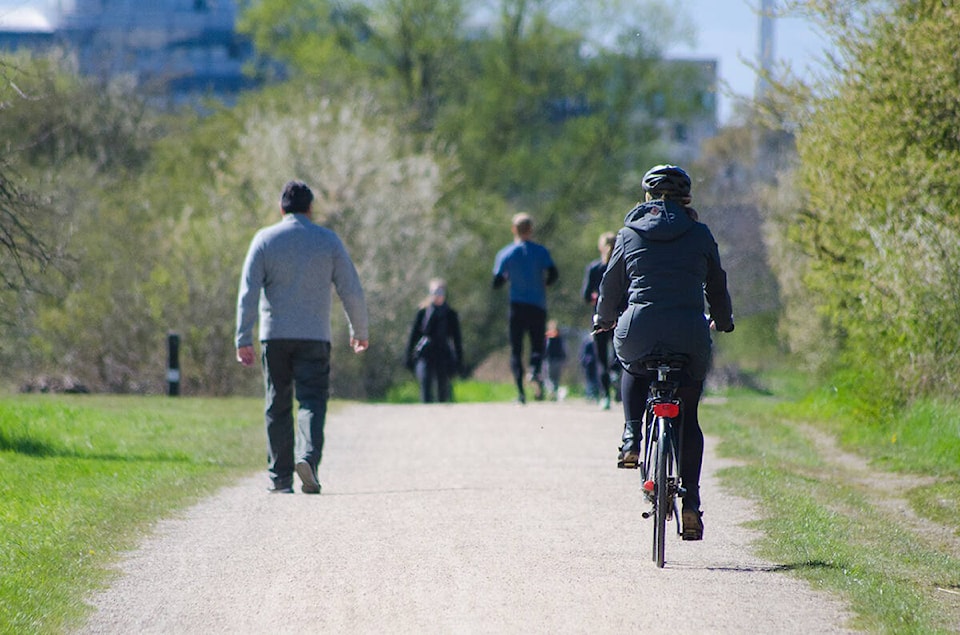Whenever a new protected bike lane opens or is proposed in Greater Victoria, some respond by saying the other ones aren’t “being used.”
A new survey by the Capital Regional District (CRD) says otherwise, with a rise in cycling, as well as an increase in other modes of active transportation like walking or transit.
The CRD announced Wednesday (Sept. 13) the 2022 Origin Destination Household Travel Survey results.
According to the results, there’s been a rise in active transportation with 29 per cent of trips made by walking, cycling and transit use, up from the 2017 mode share of 26.6 per cent. The regional target is 45 per cent by 2038.
Survey data shows a 10-per-cent decrease in total personal trips, even amidst a nine-per-cent growth in population. This decline sees a shift from 1,104,300 trips in 2017 to 995,900 trips in 2022.
The CRD says the reduction in trips can be attributed to “changing behaviours” within the densely populated core, with distinct patterns emerging in the surrounding regions.
“The data provides helpful insights into our community mobility. Walking and biking within our neighbourhoods are gaining traction and, notably, there’s a significant reduction in driving in the densely populated core,” said Colin Plant, CRD board chair. “It is also interesting to see that e-bikes make up 11 per cent of all adult bikes but account for 30 per cent of all bike trips.”
The 2022 survey gathered new data about e-bikes, e-micromobility and the availability of EV charging. Additional questions were asked about work location patterns, with the findings revealing significant changes in commuting and work-from-home behaviour. Also, questions asked on dwelling tenure and income may facilitate future equity analysis. This new information is to support additional research including potential climate action and affordability analysis, said the CRD.
“This information can help us collaborate with local governments, agencies, and the province to develop effective transportation strategies that support the needs of our diverse communities. By assessing the data, we can track our progress toward regional transportation goals and gain a deeper understanding of the dynamics shaping travel behaviours,” said Plant.
READ MORE: Victoria ditching ‘slip lane’ blamed for congestion, but still called ‘great fix’
